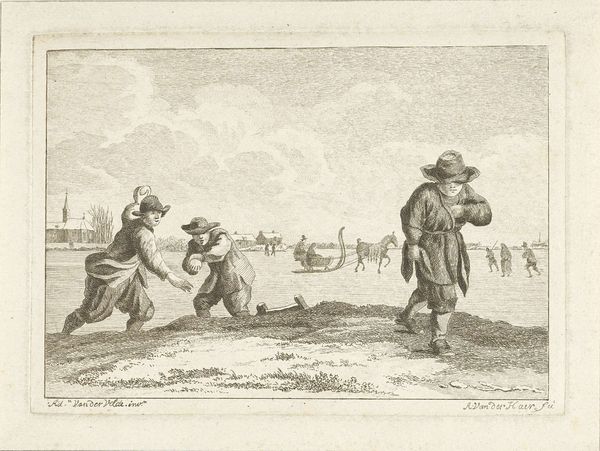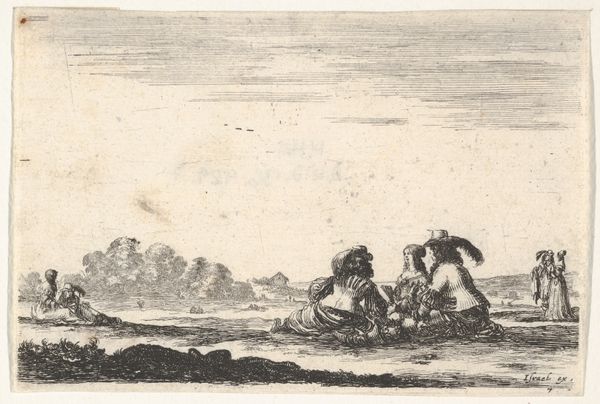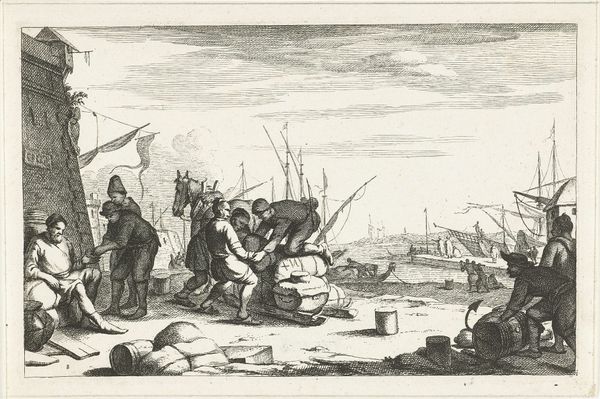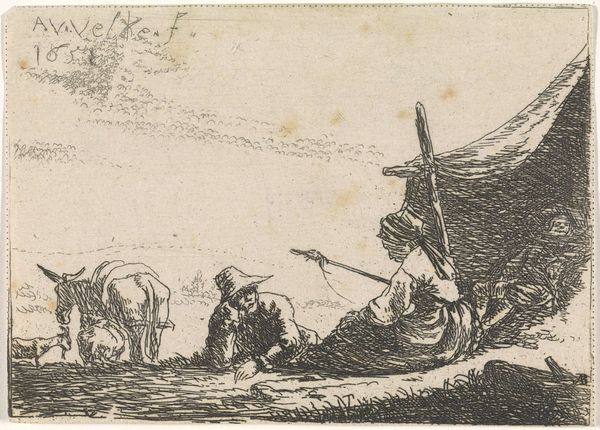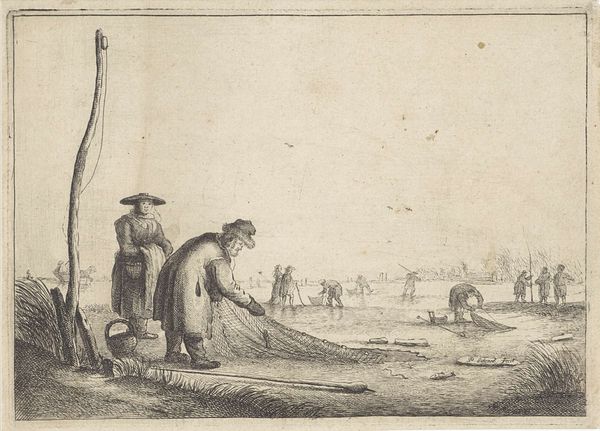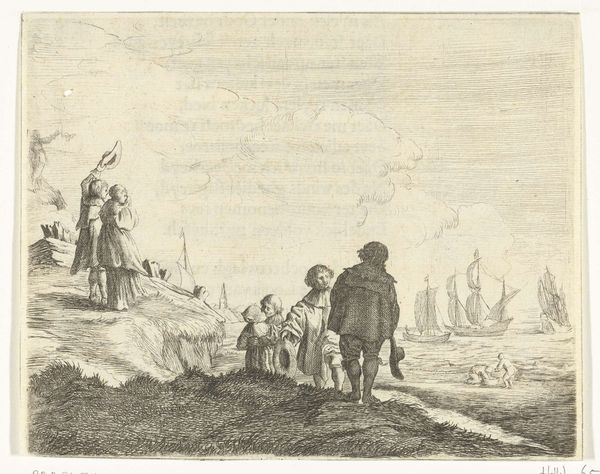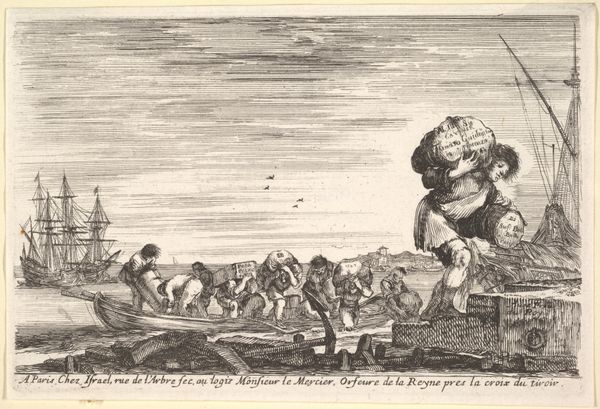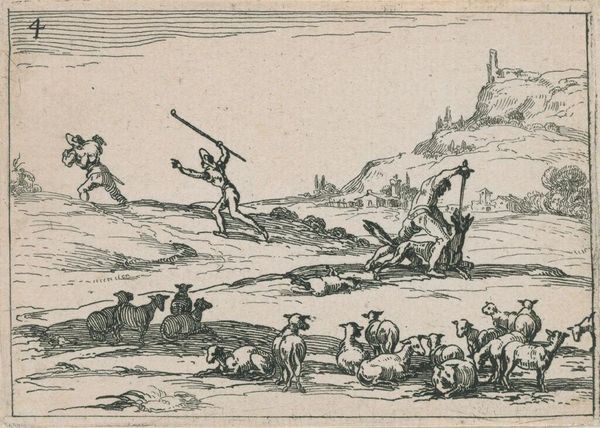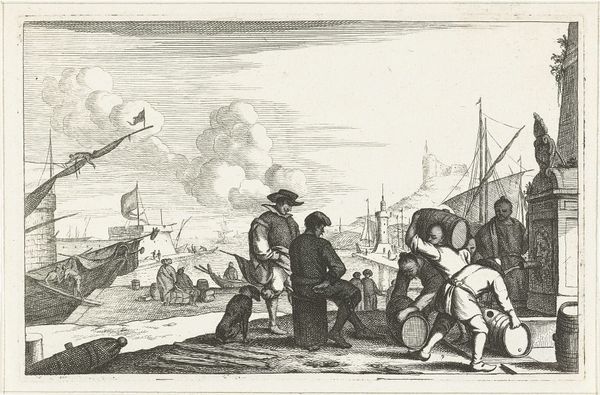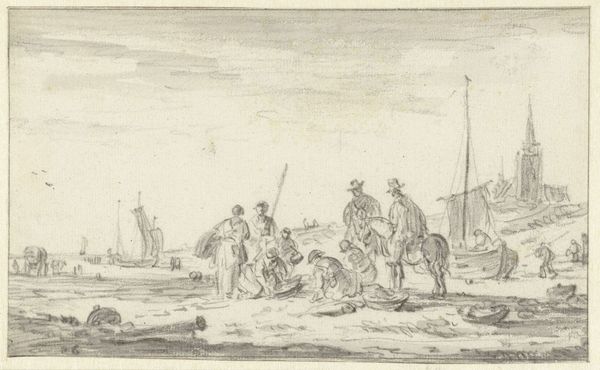
Dimensions: height 105 mm, width 136 mm
Copyright: Rijks Museum: Open Domain
Editor: This print, “Sneeuwballengooiers” or “Snowball Throwers”, is attributed to an anonymous artist and was likely created sometime between 1745 and 1835. It looks like an engraving. The wintry scene is quite charming, almost idyllic. What jumps out at you when you look at it? Curator: The charm you identify is a curated illusion, in my view. I see a representation of labor and leisure intertwined. Look at the precise, repetitive lines of the engraving – a process of careful, manual reproduction making accessible to a wider consumer market, in printed form, an image that evokes leisure and labor. Who do you think could afford prints like these? Editor: Probably not the people in the print skating, hauling sleds, and throwing snowballs! So, how does the material, the print itself, connect with the people depicted within the work? Curator: Exactly! The material—an easily reproducible engraving—and its implied consumption highlights social stratifications of labor during that era. The depicted "leisure" reinforces those divisions. The image romanticizes everyday life and, in turn, obscures the economic realities shaping society. The act of creation itself, the repetitive etching, is labor. And whose labor is depicted here? And for whose consumption? Editor: So, even a seemingly innocent genre scene like this is tied to the economic system of its time through both its content and the means of its production. Curator: Precisely. It prompts us to consider who has the means to both engage in leisure and consume images of it, doesn't it? And even to what extent this idealized 'leisure' would've truly existed as depicted. The repetitive making and re-making reflects labour conditions. Editor: I never thought about prints that way, considering the materials themselves as commentary on labour. It definitely offers a new perspective to view the piece within a broader societal and historical framework. Curator: Indeed. Considering art’s material construction methods allows you insight into labour, commodification, and the market in that time period.
Comments
No comments
Be the first to comment and join the conversation on the ultimate creative platform.
